The prophetic warnings of three of the seminal thinkers of the 20th Century and the recently declassified papers from the Soviet Archives, show that Utopias can never be built upon a bedrock of tyranny and absolutism: a message that has profound lessons for the contemporary world order.
The search for utopias, a perfect social and communitarian order, often rests paradoxically on a bedrock of tyranny. Nothing makes this adage clearer than the intellectual/ideological history of the twentieth century. In this essay, I shall make use of some of the insightful writings of three seminal thinkers of the twentieth Century, namely Emma Goldman, M.N. Roy and Sri Aurobindo. I shall argue that their reasoning for failed utopias has great relevance for the contemporary world order today.
Towering personalities in their own times
Emma Goldman and M.N. Roy were towering personalities in their own times, who chartered out political and literary paths for themselves. Both were part of long-established philosophical and political tradition; both aligned with the Bolshevik Revolution of 1917 in Russia and lent it support [Roy for a longer period], but because of their independent, dissenting and original thinking, both parted company from Bolshevism in due course. Recent work by independent historians [1] such as Anne Applebaum, Donald Rayfield, Tim Tzouliadis and Amy Knight, based on declassified papers of the Soviet archives, would help explain the serious reservations of figures like Goldman and Roy regarding the nature of the Bolshevist regime, acknowledged by a growing number of Marxist sympathizers today. Such works are also to be seen against the background of the classic study by David Caute entitled The Fellow-Travelers: Intellectual Friends of Communism, 1988. [2]
Indeed, Goldman and Roy, and most importantly, Sri Aurobindo, had the foresight to see the nature of the system that would unfold in the erstwhile Soviet Union. They maintained that while the October Revolution of 1917 was unquestionably timely, momentous and epoch-making, it went paradoxically against some of its own cherished beliefs. [3] The founding of the Secret Police during Lenin’s times, and later the dreaded N.K.V.D. and KGB during Stalin’s era, paved way for a system of totalitarianism that shared parallels with Nazi Germany.
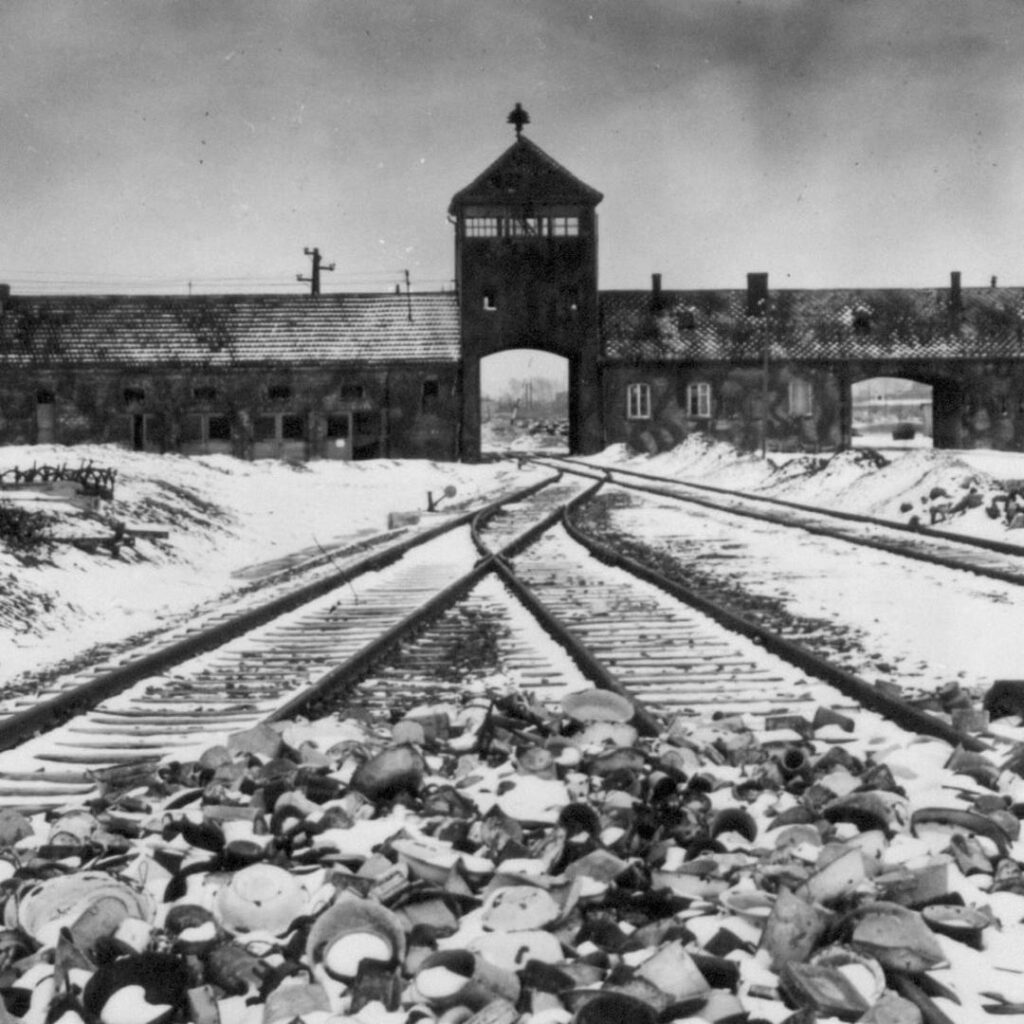
German concentration camp during World War II
Regrettably, both Goldman and Roy have been treated as renegades in orthodox Marxist circles, and appropriated as anti-communists in partisan sections. [4] They seem to be largely missing in the New Left circles as well. This is a loss to the intellectual history of Marxism and to the future possibilities of the movement, especially in the era of late capitalism and ‘globalization’ of the world which have caused wide-spread disenchantments in economic and cultural terms throughout the world.
I suggest that both Goldman and Roy, despite differences with official Communism, were lifelong supporters of Socialism of the cooperative kind. Towards the end of his life and career, Roy championed what was called Radical Humanism which also had an important component of cooperative Socialism. Sri Aurobindo offers considerable thinking in his socio-political writings regarding the drive towards centralization and the emergence of the all-powerful State Socialism, often termed as Communism; he foresees possibilities in the future of Socialism in the last part of The Ideal of Human Unity towards the end of his career in 1949.
Missed opportunities
The Centenary of the October Revolution in 2017, rightfully celebratory in character, did not seem to carry, deeper introspections [honorable exceptions apart] regarding the Bolshevist movement and its critique by sympathetic adversaries, barring the mandatory critique of Stalinism. The amnesia is unfortunate and needs to be discarded for a more complete account of the movement and its future possibilities.
Emma Goldman: The Radical Free-thinker
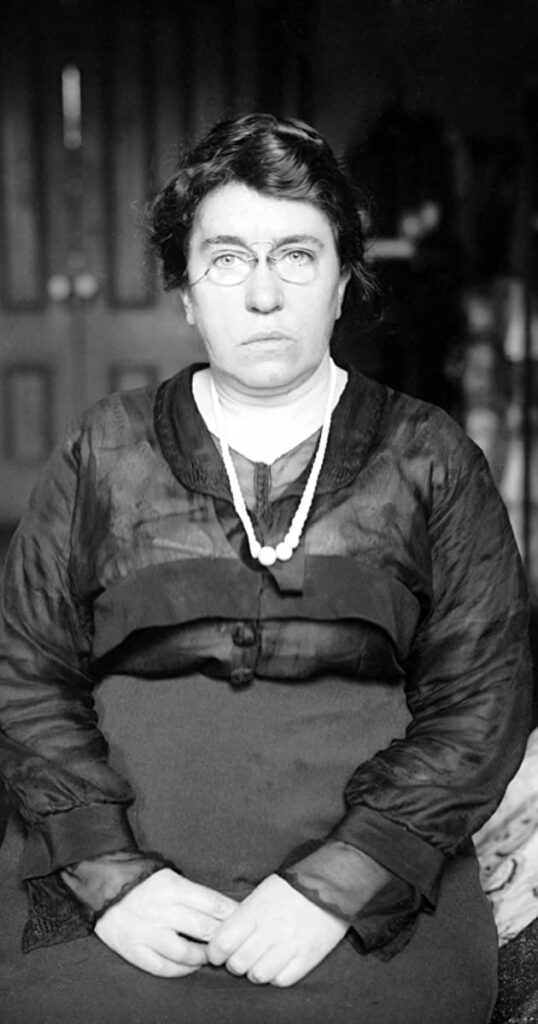
Emma Goldman’s birth into a Jewish family in Lithuania on 27 June 1869 in the former Russian Empire, her life in the adopted United States as an immigrant, involvement in revolutionary trade union, suffragette, working class, birth control, and feminist movements, her literary work through the anarchist journal Mother Earth in 1906, an autobiography Living My Life [5] along with five other books, her deportation to Russia in 1917, meeting with the various factions of the October Revolution, fateful encounter with Lenin along with her life companion Alexander Berkman, in March 1920, her affinity for cooperative socialism and reverence for Kropotkin, her two seminal works My Disillusionment in Russia and My Further Disillusionment in Russia, and, finally, her strong views on the prison-system, atheism, freedom of speech, marriage, free love and homo-sexuality, ensure her contemporary relevance. She died on 14 May, 1940 at Toronto, Canada practically unsung, and is sadly missing today in the public domain.
Against regimes of tyranny and violent authority
Goldman’s life-long opposition to regime of tyranny and violent authority ensured her non-acceptance by all political systems, although she participated heroically in major revolutions including the Spanish Civil War and the October Revolution. I would therefore make a claim for the preservations of all documents related to the life and times of Emma Goldman, and make them easily available to the present generation of interested students of culture, dealing with freedom, dissidence and internment, systems of belief, faith and atheism, as well as various forms of utopian living at the national and international level.
M. N. Roy: The Thinker as the Revolutionary
Similarly, M.N. Roy (Manabendra Nath Roy) who was born as Narendra Nath Bhattacharya on 22 March, 1887 in the Bengal Presidency of British India and died on 25 January 1954 at Dehradun, has nearly disappeared from public memory in the East and West, despite his monumental achievements as an eminent revolutionary and writer who rubbed shoulder with Lenin and the leading lights of the Comintern, [the Communist International]. His early revolutionary-nationalistic work through Jugantar, active participation in the Indo-German Conspiracy in 1914 founding of the Mexican Communist Party in 1917 and the Communist Party of India, [Tashkent group], in October, 1920, delegate to Congress of the Communist International and Stalin’s representation to China, expulsion from the Comintern by Stalin in December 1929, arrival in India and being sentenced to 12 years imprisonment in 1932 in the Kanpur Conspiracy case, meeting with Nehru, Bose and Gandhi, his differences with Gandhi, the Congress Party and the Indian Communists, his support of the Allied Powers during World War–II against the Nazi Germany, Japan and Italy,[the latter as in the case of Sri Aurobindo] differences from the Congress, his major publications like New Humanism and ‘the establishment of Radical Humanism as an alternative to Capitalism and Communism,’ make him, like Goldman, an equally eminent thinker and man of action of the 20th Century.
What is most remarkable is that at the suggestion of Lenin, Roy prepared his own thesis as a supplement to Lenin’s Preliminary Draft Theses on the National and the Colonial Questions [6].
Clearly there is an urgent need to reclaim the narrative of M.N. Roy with all the rich complexity present in his life and work [7]. Roy met Lenin in May 1920 while Goldman did so in March 1920. While the young Roy, somewhat overawed, comes out with unqualified admiration, the older and more experienced Goldman, is not taken in by Lenin’s claims and his view that freedom is a ‘bourgeois luxury’ that has no place during the Revolution. In fact, as events would reveal, Roy was to discover the real nature of the Bolshevik tyranny in 1929 when he was expelled from the Comintern in 1929 by Stalin. He manages to escape narrowly through the timely help of a Russian colleague, to India and chart out the new stage of his revolutionary and literary life.
Emma Goldman’s meeting with Lenin, March, 1920
As Goldman writes:
‘The interview with Lenin was arranged by Balabanova. “You must see Ilyich, talk to him about the things that are disturbing you and the work you would like to do,” she had said. But some time passed before the opportunity came. At last, one day Balabanova called up to ask whether I could go at once. Lenin had sent his car and we were quickly driven over to the Kremlin, passed without question by the guards, and at last ushered into the workroom of the all-powerful President of the People’s Commissars.
***
‘I broached the subject of the Anarchists in Russia. I showed him a letter I had received from Martens, the Soviet representative in America, shortly before my deportation. Martens asserted that the Anarchists in Russia enjoyed full freedom of speech and press. Since my arrival I found scores of Anarchists in prison and their press suppressed. I explained that I could not think of working with the Soviet Government so long as my comrades were in prison for opinion’s sake. I also told him of the resolutions of the Moscow Anarchist Conference. He listened patiently and promised to bring the matter to the attention of his party. “But as to free speech”, he remarked, “that is, of course, a bourgeois notion. There can be no free speech in a revolutionary period. We have the peasantry against us because we can give them nothing in return for their bread. We will have them on our side when we have something to exchange. Then you can have all the free speech you want — but not now.’ [8]
M.N. Roy’s meeting with Lenin, May, 1920
Roy recollects in his autobiography:
‘The entrance to the office of the President of the Council of People’s Commissars was guarded by an army of secretaries headed by an oldish woman. Unassuming in behavior, plain in looks and rather shabbily attired, she was evidently efficient with her unobtrusive authority. Pin drop silence reigned in the large room occupied by Lenin’s personal Secretariat, which was composed of about a dozen people.
***
‘I was escorted into the Secretariat. Engrossed in their respective preoccupation, the inmates took no notice of me. But St. Peter of the Bolshevik heaven was always on the alert. She stood up, looked at the big clock on the wall, and silently came forward to take over the charge from the subordinate colleague who had escorted from the entrance of the palace. She conducted me towards a tall silver and gold door, pushed it open gently, just enough for one to pass, and with a motion of the head bade me enter. I stepped in, and the door silently closed behind me.
***
‘Nearly a head shorter, he tilted his red goatee almost to a horizontal position to look at my face quizzically. I was embarrassed, did not know what to say. He helped me out with a banter: “You are young! I expected a grey-bearded wise man from the East”. The ice of initial nervousness broken, I found words to protest against the disparagement of my seven and twenty years.
‘Lenin laughed, obviously to put an awe-struck worshipper at ease. Though much too overwhelmed by the experience of a great event to observe details, I was struck by the impish look…The impish smile did not betray cynicism. Lenin was the most unmitigated optimist. Not only was he convinced unshakably that Marxism was the final truth, but he believed equally firmly in its inevitable triumph. He combined the fervor of the prophet with the devotion of the evangelist.’ [9]
Looking back at a later period, Roy mused in his autobiography: ‘Lenin might have turned the course of the revolution to a more fruitful direction. The New Economic Policy was the signal. Its unfoldment might have headed off the subsequent relapse into terrorism and coercion, which destroyed the utopian ideal of Communism.’ [10]
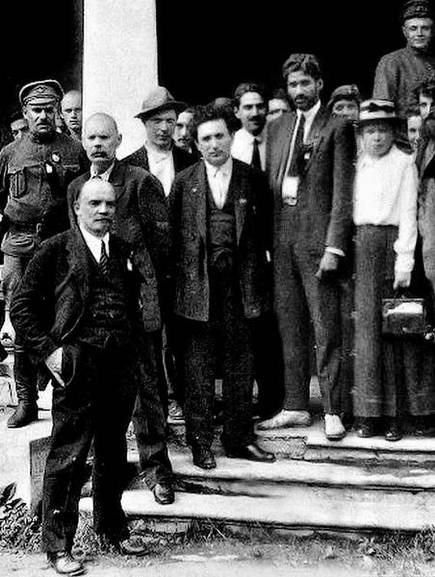
M.N. Roy with Lenin in 1920. Courtesy: Frontline.
Future: Cooperative Socialism?
Could Lenin have tried out a newer form of Socialism through his New Economic policy had his life not been cut short, as M.N. Roy muses? Such questions would remain hypothetical, but it was central to Roy, especially in his later days. As V.M. Tarkunde, one of the best civil-rights exponents of his time wrote about Roy’s economic and political philosophy in memorable terms:
‘Contrary to economic thinking which was then current, Roy gave priority in the People’s Plan to the development of agriculture and small-scale industry. The Indian State, according to the Draft Constitution of Free India, was to be organized on the basis of a countrywide network of Peoples’ Committees having wide powers such as initiating legislation, expressing opinion on pending bills, recall of representatives and referendum on important national issues.’ [11]
This was indeed a clarion call for a decentralized approach to development based on people’s participation at the State and regional level, an approach that is still waiting for its day in India.
Sri Aurobindo
Goldman and Roy were not the only ones to have faith in cooperative socialism. In the postscript chapter of his important political treatise called The Ideal of Human Unity, Sri Aurobindo was to write with great insight about the future course of events. He wrote at the height of the Cold War in 1950:
‘It is not that the principles of Communism necessitate any such results or that its system must lead to a termite civilization or the suppression of the individual; it could well be, on the contrary, a means at once of the fulfilment of the individual and the perfect harmony of a collective being. The already developed systems which go by the name are not really Communism but constructions of an inordinately rigid State Socialism. But Socialism itself might develop away from Marxist groove and evolve less rigid modes; a cooperative Socialism, for instance, without any bureaucratic rigor of a coercive administration, of a Police State, might one day come into existence…’ [12]
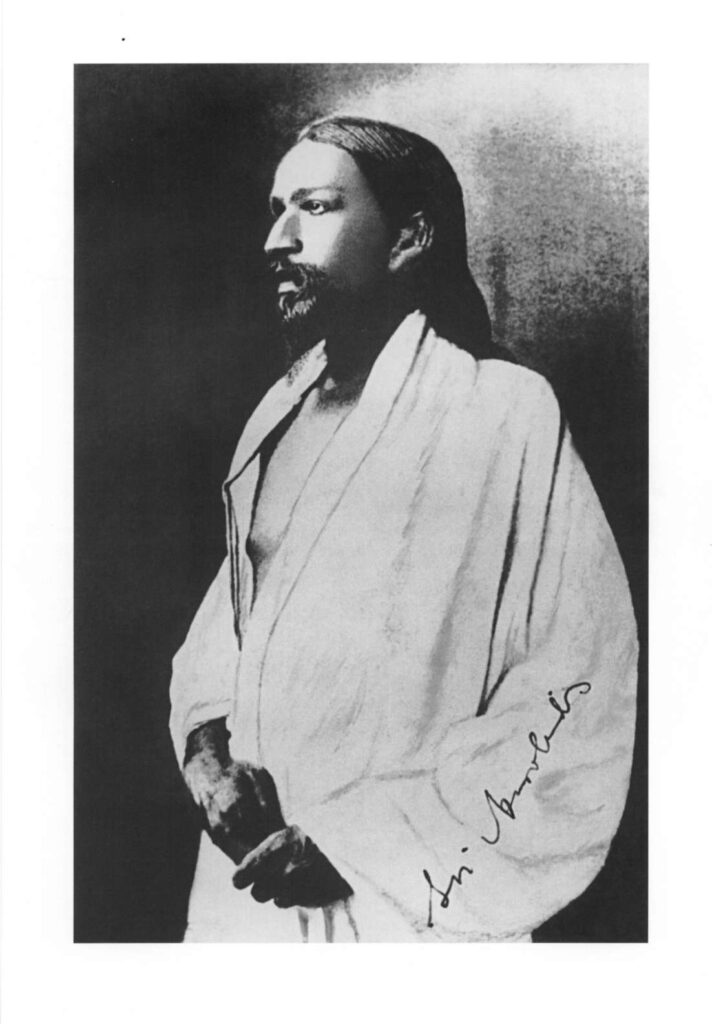
An approach to governance, Sri Aurobindo, declares, must not rest on dominance and subjugation, but on the free acceptance of the citizens regarding the rule of law in our civic. economic and cultural life. In the ultimate analysis, it will be deeper psychological and spiritual factors that will determine the importance of what he calls ‘diversity in oneness,’ and the principle of self-determination.
It is here that, we may consider the answer Sri Aurobindo provides. As he writes insightfully:
‘The right idea of self-determination makes a clear sweep of these confusions. It makes it clear that liberty should proceed by the development of the law of one’s own being determined from within, evolving out of oneself and not determined from outside by the idea and will of another. There remains the problem of relations, of the individual and collective self-determination and of the interactions of the self-determination of one on the self-determination of another. That cannot be finally settled by any mechanical solution, but only by the discovery of some meeting place of the law of our self-determination with the common law of mutuality, where they began to become one. It signifies in fact the discovery of an inner and larger self-other than the mere ego, in which our individual self-fulfillment no longer separates us from others but at each stage of our growth calls for an increasing unity.’ [13]
Conclusion
This then could be the lasting legacy of Emma Goldman, M. N. Roy and Sri Aurobindo: a move towards greater unity and equality among mankind, based on the principles of freedom and cooperation, In varied measures, the approach resonates today with a growing body of experiments in community living throughout the world, outside the pale of the all-powerful State. It has profound lessons for the contemporary world order.
Dr. Sachidananda Mohanty
Endnotes:
[1] See, among others, Gulag: A History, by Anne Applebaum, London: Penguin Books, 2003; The Forsaken: An American Tragedy in Stalin’s Russia by Tim Tzouliadis, London: Penguin Books, 2008; Stalin and His Hangmen, by Donald Rayfield, Viking, 2004; London 2005; Beria: Stalin’s First Lieutenant by Amy Knight, Princeton: Princeton University Press, 1993.
[2] The Fellow-Travelers: Intellectual Friends of Communism, by David Caute, New Haven, Yale University Press, 1988. Caute underlines the political and ideological circumstances that led to the pronounced affinity most intellectuals of the times had towards Bolshevist Communism in Russia during the first half of the 20th Century. By far the best book on the subject.
[3] One of the first moves made by the Bolshevists who seized power from the Social Democrat Kerensky, was to establish the All-Russian Extraordinary Commission (commonly known as Cheka) to deal with counter-revolutionary activities. The approach was laid down by Felix Dzerzhinsky, the founder of Cheka, who defended the organization in unequivocal terms:
‘We stand for organized terror – this should be frankly admitted. Terror is an absolute necessity during times of revolution. Our aim is to fight against the enemies of the Soviet Government and of the new order of life. We judge quickly. In most cases only a day passes between the apprehension of the criminal and his sentence. When confronted with evidence criminals in almost every case confess; and what argument can have greater weight than a criminal’s own confession?’. https://www.goodreads.com/author/quotes/480078.Felix_Dzerzhinsky , accessed on 27.5.21.
Initially meant to defend the new Russian State against elements of the old guard, subversives, hoarders and criminals, Cheka soon acquired extralegal authority, especially after the failed assassination of Lenin on 30 August 1918 by Fanya Kaplan, a member of the Social Revolutionary Party, one of the many political factions that functioned underground during the early days of the Revolution.
For a good understanding of this subject, see, Russia and the Cult of State Security: The Chekist Tradition, From Lenin to Putin by Julie Fedor, Routledge, 2013.
[4] Upon her return to England from Russia, after the initial spirit of welcome by well-known thinker-writers like Harold Laski and Rebecca West, Emma did not get the hearings she expected due to the pro-Bolshevist sentiments then current in the continent. See https://theanarchistlibrary.org/library/emma-goldman-living-my-life. Accessed on 28.5.21.
[5] https://theanarchistlibrary.org/library/emma-goldman-living-my-life. Accessed on 28.5.21.
[6] Sibnarayan Ray, In Freedom’s Quest: Life of M.N. Roy (Vol. 1: 1887—1922). Calcutta: Minerva Associates, 1998, pp.93-94. An important and sympathetic publication in recent years has been by Kris Manjapra entitled M.N.Roy: Marxism and Colonial Cosmopolitanism, New Delhi : Routledge India, 2010. Manjapra’s study, excellent as it is, sadly, does not seem to find many takers even in elite departments of History, Political Science, Philosophy and Cultural Studies in India.
[7] It is true, the Oxford University Press has brought out the Selected Works of M.N. Roy from 1987 through 1997, A total of 4 volumes were edited and published by Sibnarayan Ray. Unfortunately, the project was abandoned in 2008 following the demise of Ray, a great loss to Roy scholarship. The volumes are not widely publicized.
[8] See Emma Goldman, My Disillusionment in Russia, New York: Doubleday Page and Company, 1923, pp.47-51. Also see, the letter of Kropotkin to Lenin in Cosmopolitan Modernity in Early 20th Century India by Sachidananda Mohanty, New Delhi: Routledge 2nd edition, Global and South Asian, 2018. pp. 8-9.
[9] See Mint-on-Sunday Stalin’s Youngman: M.N. Roy and the Russian Revolution: First Meeting with Lenin. https://www.livemint.com › Sundayapp › Stalins-youngman, Accessed on 26.5.21.
[10] https://www.livemint.com › Sundayapp › Stalins-youngman, Accessed on 26.5.21.
[11]V.M. Tarkunde, ‘Introduction’ to Men I Met by M.N. Roy, New Delhi: Ajanta Publications,1968; rpt.1981. The book offers pen portraits of many world-famous figures Roy met in his career.
[12] Sri Aurobindo, The Ideal of Human Unity, [First edition,1919]; rpt. Pondicherry: Sri Aurobindo Ashram, 1998.
[13] Sri Aurobindo, War and Self-Determination, Pondicherry: Sri Aurobindo Ashram, 1962. pp. 844-46.
This is a revised and expanded version of the article that had appeared in Frontline, 16 July 2021.Due credits to the Editor of Frontline.
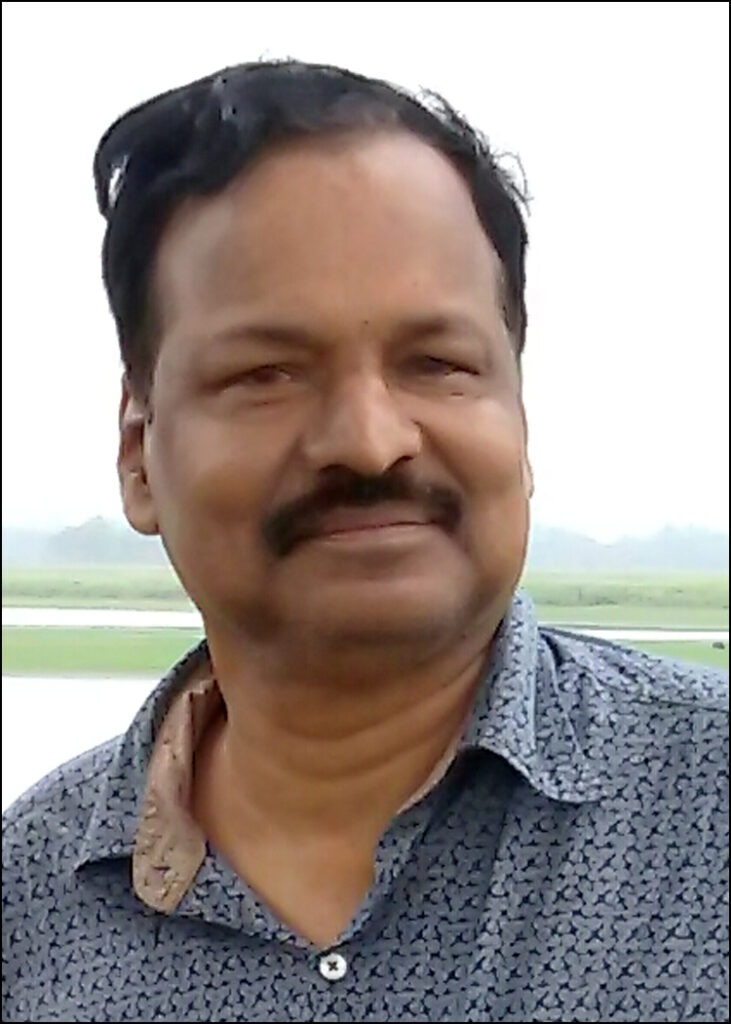
About the Author: Prof. Sachidananda Mohanty, Ph.D., was formerly Professor and Head, Department of English, University of Hyderabad, [an Institution of Eminence], Vice-Chancellor of the Central University of Odisha and Governing Board Member of Auroville Foundation, administered by the, MHRD, Government of India. He was a Member of India’s Commission of Education to the UNESCO, Consultant to the Ford Foundation, and Senior Academic Associate at the American Studies Research Centre, [ASRC], Hyderabad.
Dr Mohanty was educated at Bhubaneswar, Pondicherry, [Sri Aurobindo International Centre of Education], the University of Hyderabad, IIT Kanpur, Nottingham University, University of Texas at Austin, and Yale University, New Haven.
He is the recipient of several national and international awards including those from the British Council, Charles Wallace, the Salzburg, the Katha and the Fulbright. [twice].
He was the Associate Editor, Indian Journal of American Studies, and Vice-President of South India American Studies Network (SIASN). He was Fellow, Cambridge Seminar on the Contemporary British Writers and Warwick Seminar on Literary Translation.
He was invited by the India Fulbright Commission [USIEF] to author a commemorative volume on the Fulbright Program and Educational/Cultural Exchange in India, [Foreword by Prof.J.K. Galbraith and published in 1997].
He has won many coveted awards in translation such as the Katha Award, and the Katha-British Council Translation Prize. His pioneering work on the colonial periodicals is forthcoming in the Edinburgh Companion to the British Colonial Periodicals edited by some of the foremost critics of the U.K.
He has been a widely respected public intellectual and an active voice in leading forums including The Hindu, The Indian Express, India Today, New Quest, Economic and Political Weekly, Seminar Magazine, India International Centre Quarterly, Toronto South Asia Review, Frontline, Springer, and South Asia Review. He has published more than 100 research articles, (many in respected and peer reviewed journals), and newspapers, especially in their magazine and literary pages. He has lectured at some of the leading universities in India and abroad including the City University of New York, Pittsburgh University, California State University, Australian National University at Canberra and the National University of Singapore.
He has to his credit 28 books in English and in Odia including D.H. Lawrence Studies in India, Writers’ Workshop,1990; Lawrence’s Leadership Politics and the Defeat of Fascism, Academic Foundation,1992; Understanding Cultural Exchange, Vision Books 1997; Literature and Culture, Prestige, 2000; Travel Writing and the Empire, Katha, 200, Early Women’s writing in Orissa, 1898- 1950: A Lost Tradition, Sage Publications,2005; Gender and Cultural Identityin Colonial Orissa, Orient Longman,2008; Sri Aurobindo: A Contemporary Reader, Routledge India,2008;rpt.2009;2010;Sarala Devi, Central Sahitya Akademi,2011; Periodical Press and Colonial Modernity: Odisha, 1866-1936, New Delhi: Oxford University Press, 2015; The Lost World of Sarala Devi, Oxford University Press 2016; Cosmopolitan Modernity in Early Twentieth Century India, Routledge India, 2015, Revised 2nd South Asian and Global editions 2018.
He has been an Adviser to leading Indian Universities and delivered invited / Endowment lectures at the national and international level. At Auroville Foundation, he served as the Chair of the taskforce on Education and Governance of the unique international township.
In recognition of his pioneering research in the cultural history of Odisha, the Central Sahitya Academy organized national seminars around his book on Sailabala Das at Sailabala Women’s College, 1-2 March 2004, and on Sarala Devi during 1-2 September 2007 at Cuttack, His contributions to the academic genres of travel writing, cosmopolitanism, institutional history, early women’s writing in Eastern India, and postcolonial/ cultural history of India have been widely recognized as path-breaking at the national and international level.
Prof. Mohanty is Contributing Editor and Adviser to Muse India, the acclaimed web journal. He can be reached at: sachimohanty@yahoo.co.in.
I take a very special pleasure in commenting upon and commending as well the masterly article produced by my dear friend Professor Sachidananda Mohanty – it is a high powered nascent critical analysis of the political era which had promised much , but delivered far less – it is a tragedy that unfolded gradually and trapped the humankind –
– that this ideology gave rise to the tyrant dictators only like Joseph Stalin -and – Vladimir Putin is the culmination of this fake , false and fractured ” Bolshevism “- it is a subversion of Utopia and all that is noble and gracious in human thought and human souls –
Our scholarly professor writes with smooth felicity and style which is at once arresting and based on solid facts –
He has opened through his well researched narrative altogether a new door of understanding of the complex scenario by citing plethora of notes , pronouncements and revelations from the three masters and witness of the historical events of an eminently forgettable era / age
– Salutations to Lord Sri Aurobindo –
Surendra s chouhan – SAICE’ 69
Thank you Surendra Bhai for the kind words. Much appreciated. Thank you!
Sachidananda Mohanty
Informative article. However I have a doubt :
is it appropriate to bring Sri Aurobindo and MN Roy
at the same level, even in an academic discussion?
You are very right, Sir even if one means well 🌹🌹🌹
As regards the ‘doubt’ of Mr. Dutta, may I say that my intention in the essay was to try and understand utopian experiments in the 20th century that missed their way and ended up in aberrations? I have argued that freedom is absolutely essential in the search for a perfect social order.
The three major thinkers are brought in as part of the intellectual history of the 20th century. After all, Sri Aurobindo, in his voluminous writings, including in his social-political thought, brings in some of the major contemporary thinkers from the East and the West. No disrespect is meant to anyone. Rather, we see in the words of Sri Aurobindo, an extraordinary political understanding which rests essentially on his Vision of human evolution.
Thank you!
Sachidananda Mohanty
Very cogent reply –
Surendra
On reaching Manila, Naren [M.N. Roy] learnt about the battle of Balasore and Jatin Mukherjee’s self-sacrifice. “I was tormented by a psychological conflict between an emotion (loyalty to old comrades) and an intelligent choice of a new ideal”, he writes. “I could not forget the injunction of the only man I ever obeyed blindly. Before leaving India for the second time, I personally escorted Jatin Da to the hiding place where he later on fought and died. In reply to the thoughtless pledge of a romantic youth – I will not again return without arms – the affection of the older man appealed : Come back soon, with or without arms. The appeal was an order for me. He was our Dada, but the Commander-in-chief also.
“Jatin Da’s heroic death had absolved me from the moral obligation to obey his order. Already in the autumn of 1915, while passing through Manila, I had received the shocking news. But then, my reaction was merely emotional : Jatin Da’s death must be avenged. Only a year had passed since then (…). In other words I could turn my back on the old mission without the guilty conscience of betraying a trust, because a new one appealed more strongly not only to my emotion, but also to my intelligence. Otherwise, disappointment and disgust might have persuaded me to end a life of adventures with the end of a mission.”
Congratulations, Sachi. In a resolution to avenge Jatin Mukherjee’s death, Roy had dreamed of creating a new society, as described in the passage contained in the Memoirs, represented by (…). No one had as yet analyzed the scope of “ this philosophically rich and historically sound article” as you have done for the special issue of Srinvantu. I wonder if you cannot find further dimensions destined to be added to this structure of Utopia. The context of my thesis, Intellectual Roots (Manohar Books) stopped me from this expansion.
Prithwin-dâ
14 March 2022
Derived immense knowledge. Shibnarayan Roy, a devout believer of radical humanism was the brother of my mom’s best friend. He was the editor of a very high standard magazine named ‘Jiggansha’. I have a copy of Roy’s biography. But little do I know about Emma Goldman. Thank you.
Thank you Prithwin da for your kind words. Coming as they do from a scholar of your stature and caliber, they mean a lot to me. Thank you for motivating us to take up the next phase of this lost narrative. We are indeed grateful to you for chronicling so well the transnational nature of Indian nationalism that owes in great measure to the legacy of Jatin Mukherjee. Finally, we remain most grateful for the Action of Sri Aurobindo in world affairs.
Sachidananda Mohanty
Thank you Ms. Urmimala! How wonderful it is to discover that late Professor Sibnarayan Ray was a family friend of yours. How I wish I had the opportunity to meet him! His contribution to the M.N.Roy scholarship is most valuable. Had he lived longer, he would have completed the editing of the complete works of M.N.Roy.
As regards Emma Goldman, very few world figures of her times, had her courage of conviction and astute political and philosophical understanding. She differed most radically from Lenin as you would have seen in my essay. I hope the current generation reads her work which is so relevant to our times. Thank you!
Sachidananda Mohanty
I must thank you once again dear Surendra Bhai for the close reading of my essay.
You should know since you lived in China for so many years and heard directly from the Chinese about the consequences of the so-called ‘Cultural Revolution.’
To many readers, the references in my article may appear to be just that, namely references! I for myself found the accounts most horrific and chilling. As it is rightly said, ‘those who forget history are condemned to repeat it!’ President Putin, we must remember, was a Lt. Colonel in the KGB.
People should read about what Stalin did to Ukraine during the so-called Collectivization Program during the 1930s of the last century, and the manner in which the people of Ukraine suffered due to man-made famines during this period. Let us pray for peace to be restored in Ukraine.
Sincere thanks to dear Anurag for a timely publication.
Sachidananda Mohanty